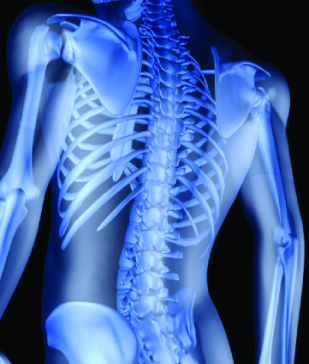The difference between complex movements and complicated motions is a degree of fine tuning. Such tuning can take a toddler banging pots and pans on the kitchen floor and make them into a concert pianist confidently striking all the right keys. Skill, maybe even innate talent, is inarguably a factor in athletic success yet it is wasted if the human body is unable to do what it is designed to do. Those dysfunctions that create predisposition to injury can hold a golfer back from playing his or her best.
This conjunction is where I step in. As a chiropractor certified in applied kinesiology who helps people not only heal from injury but correct underlying dysfunctions for the sake of optimal performance, I write to you now to give you a few tools to fine tune your body.
Let’s look first at the movements of the spine during the set-up, pre-swing, swing and follow through. Upon set-up the spine will be neutral, and this includes the neck. By neutral I mean someone should be able to take a club and place the handle on the back of your skull and have the club rest along the tips of the vertebra between your shoulder blades and then again on the crest of your tailbone. During the wind up the spine should remain neutral as tension is generated in the shoulders, the core and down through the legs into the ground.
The spine remains neutral until the ball is hit and then tension is released in the follow through as the neck extends slightly backwards and rotates, the middle back rotates and extends back and the lower back also extends. Strengthening the core with side planks, among other exercises, will help a golfer to generate, hold, then artfully release tension into the ball without expense to their joints upon follow through.
Chiropractic adjustments throughout the spine and pelvis, along with skillful toning of the muscles of the shoulders and hips through types of manual muscle therapy improves mobility for such complex motions as a golf swing. Interestingly enough, in those golfers I’ve accepted as patients, it is the muscles that generate the tension on the wind up that tend to display the greatest degree of dysfunction. Balanced joints should be an asset for any athlete.
Speaking of balance, the spine is intricately connected to other parts of the skeleton.
Let’s consider the rib cage which consists not only of the ribs but the breastbone, or sternum, and the thoracic (middle) back. Right now, press your thumb strongly along your breastbone in four spots from top to bottom. If one or more of these spots are remarkably tender then that is a sign that there is undue tension stored in the rib cage. In my experience adjustments to the spine are the most direct and practical ways of releasing the stress stored in this closed circle. If you have found tenderness at the breastbone I encourage you to stand, and swing your arms around to one side and then the other, picking up that back heel as you fully rotate, and breathing deeply in and out.
A minute or so of this motion should alleviate the tenderness on the breastbone and indicate reduced tension in the rib cage. Consider this flowing movement as part of your warm up before stepping up to the tee.
Lastly, as you read this article now, take a deep breath in and feel the pressure it pushes against the inside of your spine. Effective breathing will not only facilitate lung function but also provide stability for your skeleton. Consider the tires of cars on the road, for there is only air holding tons of metal off the tarmac. If pressurized air can do that for your car, imagine what it can do for your spine. I encourage you to attempt some practice swings on both a full exhalation and a full inhalation in order to see how your body responds.
I encourage all of my patients and readers to pursue a safe and active lifestyle that is both fun and rewarding. If golf happens to be your favorite four letter word, then please ask your chiropractor what you can do to best invest in the health of your spine so that you can enjoy the game to the greatest degree for as long as you’d like.


